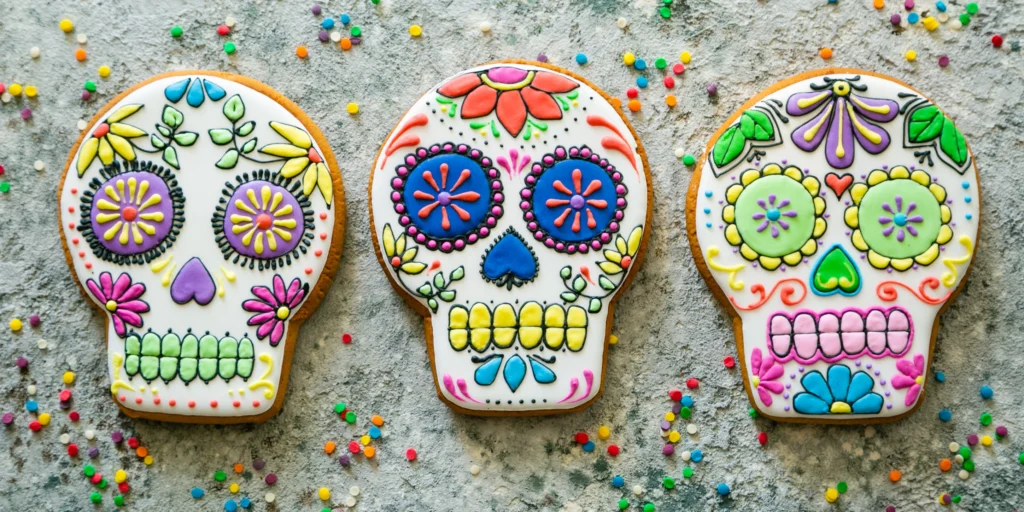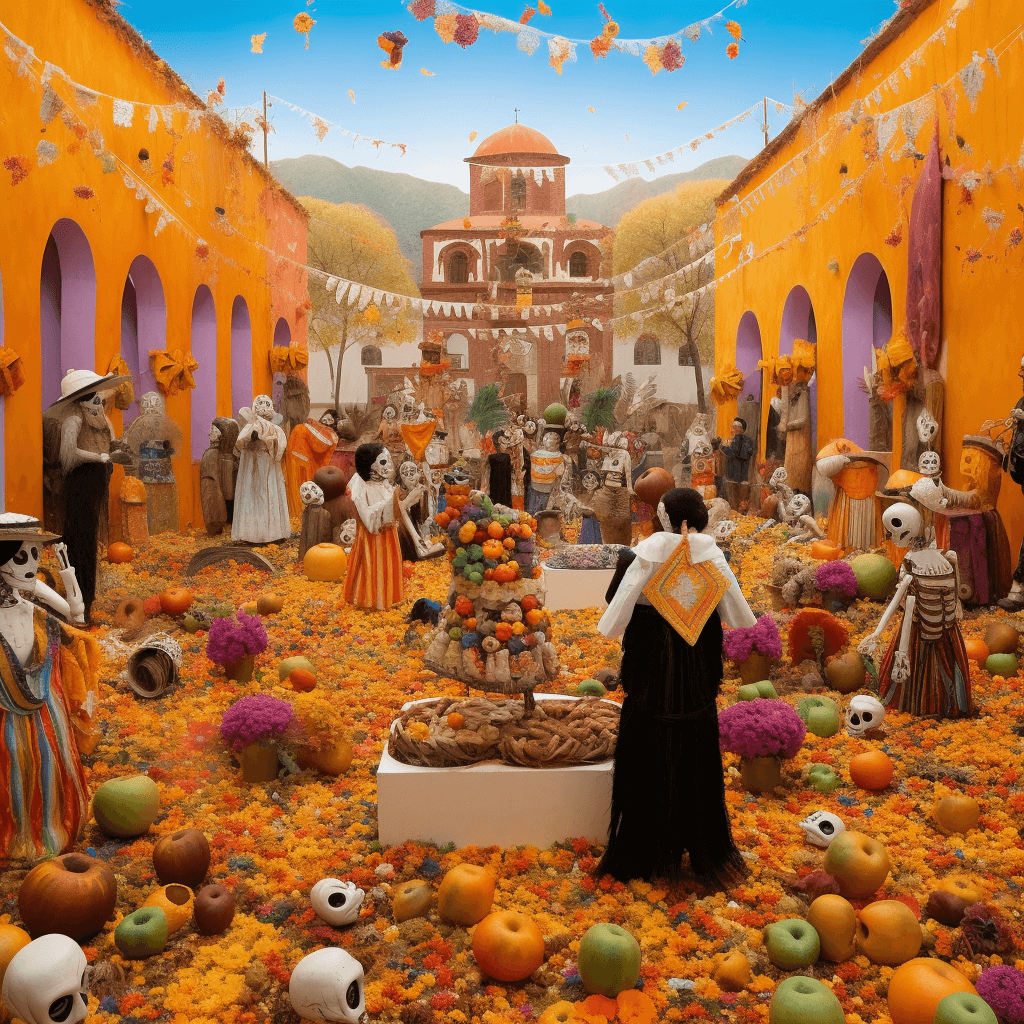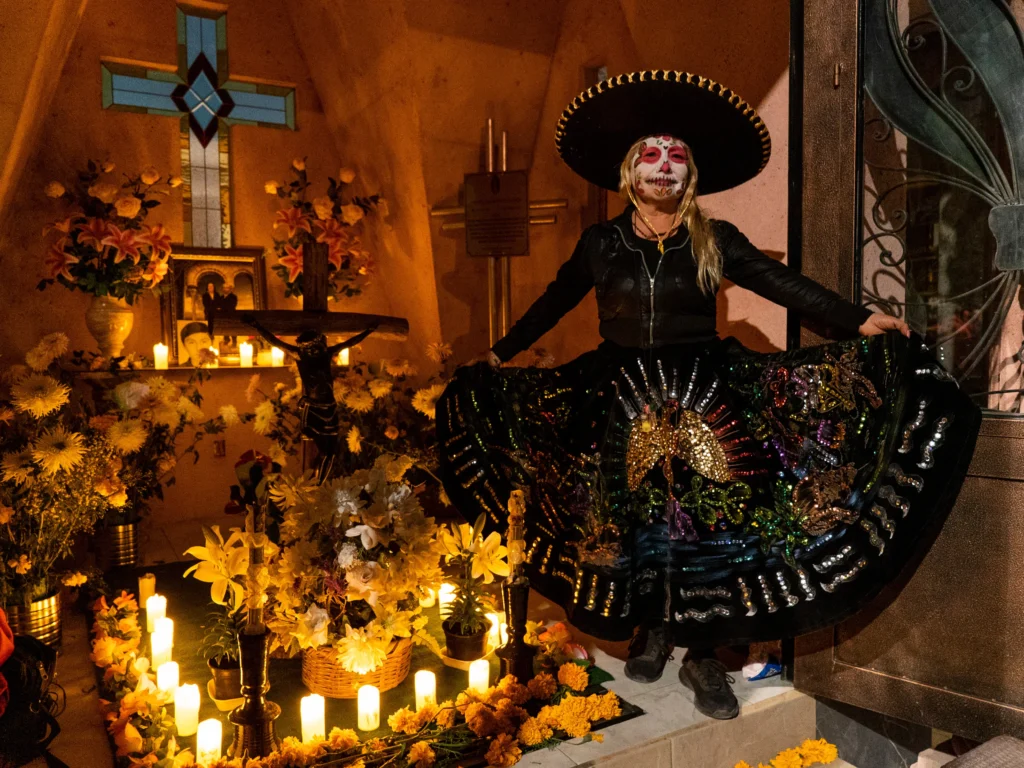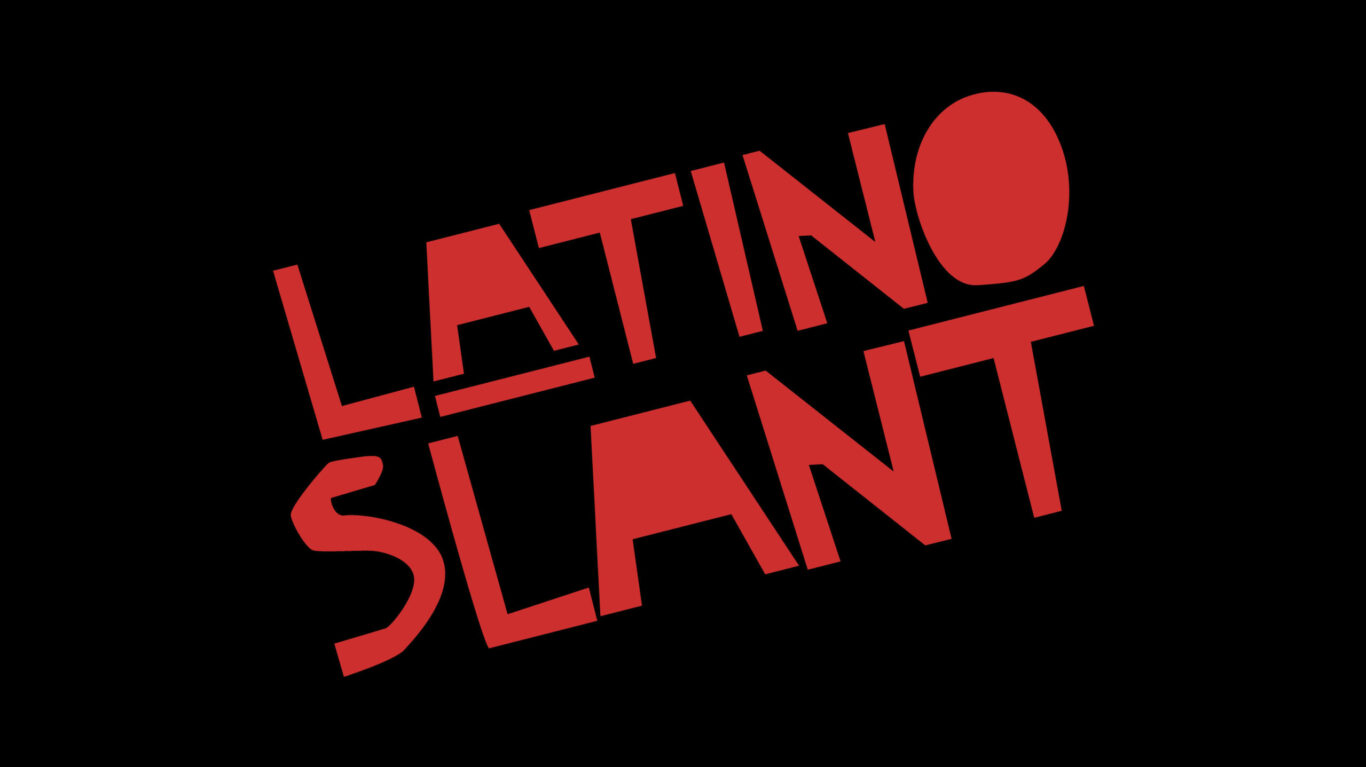Dia de los Muertos is a unique Latin American holiday that celebrates the duality of life and death.

Unlike Halloween or All Saints Day, Day of the Dead, or Dia de los Muertos, welcomes death, embraces the unknown and laughs at the oddities of life. From traditional celebrations, customs to modern takes on the holiday, Day of the Dead is a warm and inclusive holiday. Time to crossover as the duality of life and death is celebrated with joy and humor in Latin America. Unlike the Anglo-American mind set that death is final and meant to be feared, in Latin America, with Mexico in particular, death is celebrated with a holiday and looked upon just as another step to crossover. This annual holiday is known as Dia de Los Muertos or Day of the Dead.
Dia de los Muertos or Halloween?
Before discussing it’s history, traditions and current celebrations, let us correct any misconceptions. Day of the Dead is not Halloween, whose Celtic roots date back 2000 years ago. Dia celebrates the memories and spirits of our ancestors or loved ones who have passed on where Halloween and its origins tell of bothersome ghosts that return to our world to cause trouble. The Skeleton image in Dia is called a Calavera and represents life in transition and later residing in the Aztec underworld of Mictlan. The Calavera(Skeleton), or Calaca(Skull head),waits for its bones to rest and eventually be reincarnated. The Halloween Skeleton often symbolizes evil and treachery and entity to be wary of. Another misconception is that Dia and Halloween are on the same date of celebration. Dia is celebrated on Nov.1st and Nov. 2nd.

Dia Origins
In pre-Colombian times Dia, which originated in Oaxaca, Mexico, was celebrated for nearly 2 months beginning in August. As the Spanish conquest occurred and native Americans started converting to Catholicism, the holiday was moved to its current day, November 1st, All Saint’s Day, by the church who saw they could not eradicate all old customs. This masking of the indigenous holiday has lead to its growth and popularity; as it is currently celebrated in many Latin American countries and the US as well. Dia Traditions and customs include the building of an altar, the making of Papel Picado later to be hung, Pan de Muerto(Pastry bread) to be cooked and even in some cases a cemetery celebration.

Modern Celebrations
The creation of a homemade altar is essential in the celebration. From disjointed wood pieces, crates or stands, the altar is covered with colorful material, flowers, favorite dishes and images of passed loved ones. In Oaxaca gigantic paper mache characters and floats are created and decorated on lakes, dotting parade routes. Cemeteries are decorated with flowers and Mariachi musicians are paid to sing favorite songs of the deceased. In the US public celebrations now include live Latino rock concerts where patrons, hosts and musicians dawn Calavera(skeleton) paints faces. In the US, many public altars are created at Latin cultural centers, with altars created by renowned artists. These modern altars may include additions such as the image or symbol of a recently passed celebrity. For example, Many American altars back in 2009 paid tribute to Michael Jackson with a sequined glove or album cover. Now Various cities in the states celebrate the holiday and many how-to articles and blogs have been created in the recent years.
